Chicago’s architectural heritage comes alive on the Historic Skyscrapers walking tour. Led by experts from the renowned Chicago Architecture Foundation, this immersive experience unveils the city’s iconic buildings and the pioneering minds behind them. Participants will discover landmark structures like the Rookery and the Chicago Board of Trade, marveling at the distinct styles that defined the influential Chicago School. As the tour explores these architectural masterpieces, it becomes clear why Chicago’s skyline continues to captivate and inspire visitors from around the world. There’s more to uncover, so let’s dive in and uncover the secrets of these historic skyscrapers.
Key Points
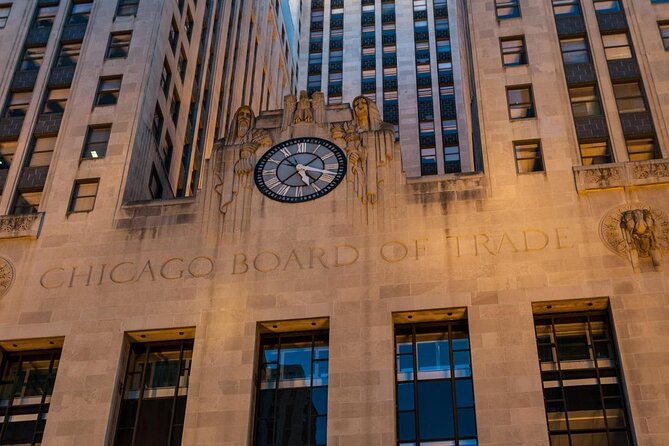
- This walking tour explores Chicago’s renowned architectural heritage, focusing on the city’s iconic skyscrapers and pioneering architects like Louis Sullivan and Daniel Burnham.
- Participants will visit landmarks like the Rookery Building, the Auditorium Building, and the Chicago Board of Trade Building, showcasing diverse architectural styles and innovations.
- The tour provides a window into the history and evolution of the influential Chicago School of Architecture, which revolutionized skyscraper design and construction.
- Visitors can explore the intricate interiors and distinctive features of these architectural masterpieces, including ornate lobbies, decorative elements, and innovative structural designs.
- The tour is led by expert guides from the Chicago Architecture Foundation and offers a comprehensive understanding of Chicago’s architectural legacy and its impact on the global built environment.
Tour Overview
The Chicago Walking Tour: Historic Skyscrapers offers visitors an immersive exploration of the city’s renowned architectural heritage. Led by expert guides from the Chicago Architecture Foundation, the 2-hour tour guides participants through the iconic Loop district, revealing the beginnings of the influential Chicago School of Architecture.
Visitors will discover some of the city’s oldest and most iconic skyscrapers, dating back to the late 19th and early 20th centuries. The tour highlights include the Rookery, a National Historic Landmark, the Auditorium Building, a Louis Sullivan masterpiece, and the Chicago Board of Trade Building, a fine example of Art Deco architecture.
With admission to the Galleries of the Chicago Architecture Center included, this tour provides an in-depth, behind-the-scenes look at Chicago’s architectural legacy.
If you're enjoying exploring Chicago on foot, you'll love these other walking tours we recommend
Iconic Architecture
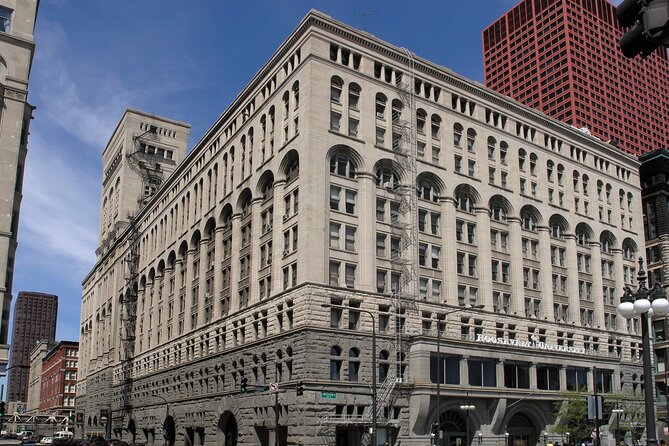
On the Chicago Walking Tour: Historic Skyscrapers, visitors can expect to explore some of the city’s most iconic architectural masterpieces that have defined the cityscape for generations. The tour highlights three standout buildings that showcase the distinct styles and influences that shaped Chicago’s architectural evolution.
| Building | Architectural Style | Significance |
|---|---|---|
| The Rookery | Chicago School | A National Historic Landmark featuring an ornate lobby and innovative structural design. |
| The Auditorium Building | Louis Sullivan | A landmark example of Sullivan’s "form follows function" philosophy, with its expressive facades. |
| The Chicago Board of Trade Building | Art Deco | An imposing, stepped-back skyscraper that embodies the elegant Art Deco aesthetic. |
These architectural gems provide a window into Chicago’s rich history and the visionaries who left an indelible mark on the city’s skyline.
Pioneering Architects
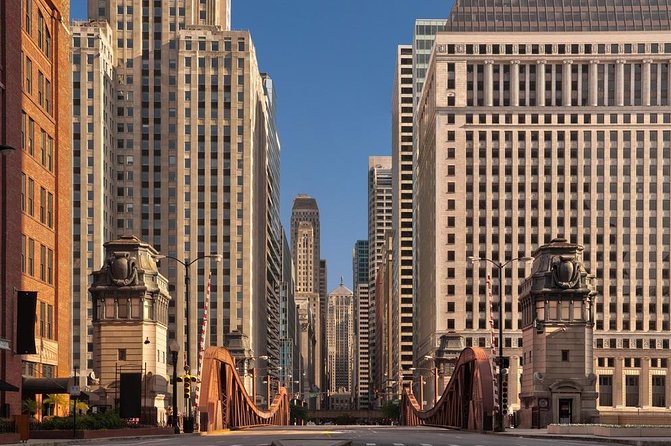
Pioneering architects such as Louis Sullivan and Daniel Burnham played pivotal roles in shaping Chicago’s architectural legacy, leaving an indelible mark on the city’s iconic skyscrapers.
Sullivan, considered the ‘father of the skyscraper,’ developed the innovative concept of the ‘tall office building‘ with his transformative designs like the Auditorium Building.
Burnham, the mastermind behind the influential 1909 Plan of Chicago, championed the city’s commercial and civic architecture, exemplified by landmarks such as the Chicago Board of Trade Building.
These visionary architects challenged conventional building styles, paving the way for the Chicago School‘s groundbreaking advancements in steel-frame construction and the democratization of skyscraper design.
Their pioneering work continues to inspire architects worldwide and cement Chicago’s reputation as a global center of architectural innovation.
Rookery Building
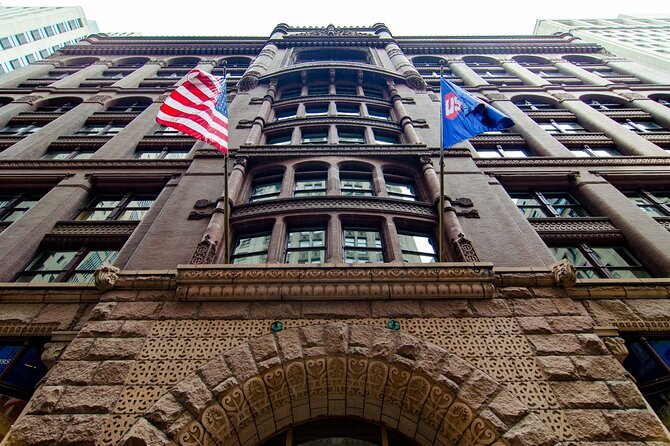
Designed by renowned architects Daniel Burnham and John Wellborn Root, the Rookery Building stands as a testament to Chicago’s architectural prowess, showcasing a unique blend of Romanesque and Renaissance Revival styles.
Completed in 1888, the Rookery is one of the city’s oldest surviving high-rise buildings, and its intricate terra cotta facade and towering atrium make it a must-see on the walking tour.
Visitors can marvel at the building’s impressive interior, including its ornate lobby and the grand central light court, which was recently restored to its original grandeur.
The Rookery’s enduring charm and historical significance make it a true highlight of the Chicago architecture experience.
Auditorium Building
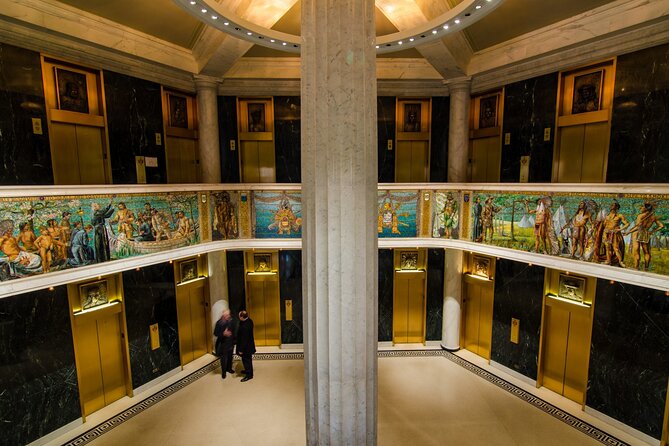
After exploring the iconic Rookery Building, the walking tour then takes visitors to another architectural masterpiece – the Auditorium Building.
Designed by the renowned architect Louis Sullivan, this stunning structure stands as a testament to the genius of the Chicago School of Architecture.
Completed in 1889, the Auditorium Building is a stunning example of Sullivan’s pioneering work, featuring his signature organic style and use of decorative elements.
The massive building, which once housed a hotel, theater, and offices, is renowned for its intricate terra cotta ornamentation and innovative design.
Visitors can marvel at the building’s grand interior spaces and learn how Sullivan’s visionary approach shaped the evolution of Chicago’s iconic skyline.
Fascinated by Chicago's past? More historical tours we've covered
- Chicago River 90-Minute History and Architecture Tour
- Chicago in a Day: Food, History and Architecture Walking Tour
- Chicago Walking Tour: Historic Treasures of Chicago
- Field Museum of Natural History Admission Tickets
- Field Museum of Natural History All-Access Pass
- The Devil in the White City: A Haunting History Tour
Chicago Board of Trade
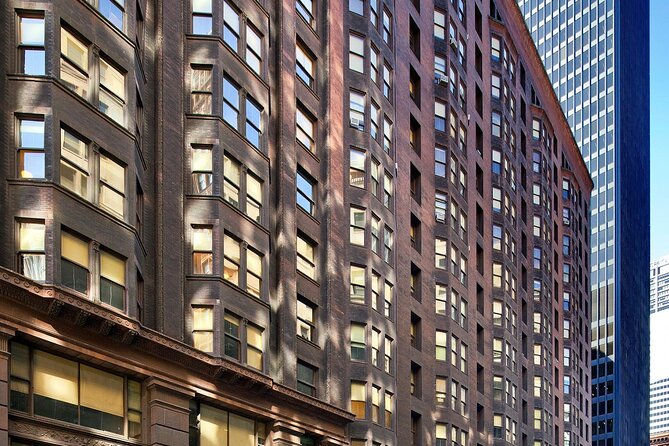
As visitors continue their journey through Chicago’s architectural gems, they encounter the iconic Chicago Board of Trade Building, a striking example of Art Deco design that has become an integral part of the city’s skyline.
Constructed in the 1930s, the building’s distinctive stepped-back tower and ornate, geometric facade are hallmarks of the Art Deco style. Visitors can marvel at the building’s impressive scale and intricate decorative elements, which include sculptures, reliefs, and a towering statue that crowns the structure.
The Chicago Board of Trade Building not only serves as a functional trading hub but also stands as a testament to the city’s architectural legacy and the ingenuity of its designers.
Tour Logistics
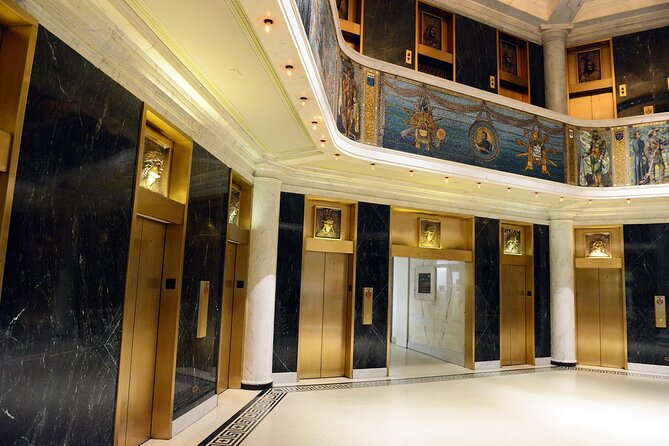
Where can visitors meet for the Chicago Walking Tour: Historic Skyscrapers? The tour starts at 410 S Michigan Ave, Chicago, IL 60605 and concludes at the Monadnock Building, 53 W Jackson Blvd, Chicago, IL 60604.
This 2-hour walking tour is led by an expert guide from the Chicago Architecture Foundation, providing an in-depth exploration of the Loop’s famous architecture and the beginnings of the Chicago School of Architecture.
The tour is wheelchair and stroller accessible, and is near public transportation. However, it’s not recommended for young children, and pets aren’t allowed.
Access to building interiors may be subject to change, so visitors should check for any updates prior to the tour.
Additional Details
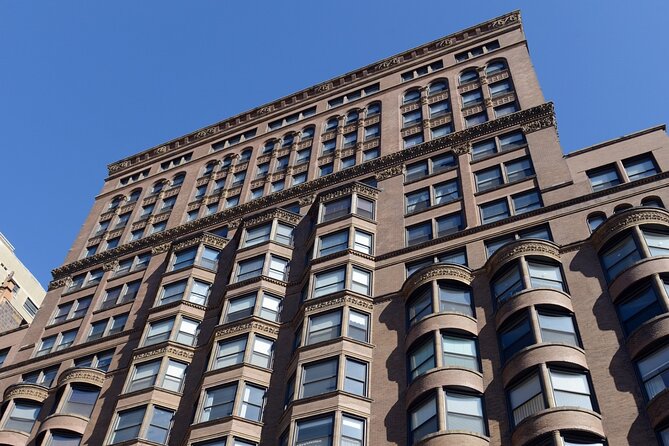
The Chicago Walking Tour: Historic Skyscrapers showcases more than just the exterior architecture of these iconic buildings. Visitors can explore the interiors of select sites, such as the Rookery, a National Historic Landmark that features a stunning atrium designed by celebrated architect Frank Lloyd Wright. While access to building interiors may be subject to change, the tour also provides a glimpse into the Art Deco masterpiece that is the Chicago Board of Trade Building.
| Wheelchair Accessible | Near Public Transit | Not for Young Children | Pets Not Allowed |
|---|---|---|---|
| ✓ | ✓ | ✗ | ✗ |
The tour’s versatility makes it an engaging experience for architecture enthusiasts of all ages and abilities.
Frequently Asked Questions
Can I Bring My Own Snacks on the Tour?
Yes, you can bring your own snacks on the tour. The tour information does not specify any restrictions on outside food or drinks. As long as it doesn’t disrupt the group, personal snacks are generally allowed.
Is the Tour Guide Certified by the City of Chicago?
The tour guide is certified by the Chicago Architecture Foundation, a non-profit organization dedicated to educating the public about the city’s architecture. They provide professional, knowledgeable guides for the walking tour.
Do I Need to Purchase Tickets in Advance?
It’s recommended to purchase tickets in advance for this tour, as spots may sell out, especially during peak tourist season. Advance booking ensures participants secure a spot on the guided tour.
Is There a Discounted Rate for Students or Seniors?
Yes, the tour offers discounted rates for students and seniors. Visitors can save on the tour price by presenting valid student or senior ID cards at the meeting point.
Can I Take Photos During the Tour?
Yes, visitors can generally take photos during the tour. The guide encourages capturing the historic architecture, though they may request visitors refrain from photographing in certain areas for preservation or safety reasons.
Recap
The Chicago Walking Tour: Historic Skyscrapers offers an immersive journey through the city’s renowned architectural heritage.
Visitors explore iconic buildings, discover the pioneering work of influential architects, and gain a deeper appreciation for the innovations that shaped Chicago’s skyline.
This comprehensive tour provides an engaging and educational experience, showcasing the city’s transformative architectural legacy that continues to inspire and influence the present.
More Historical Tours in Chicago
More Walking Tours in Chicago
- Chicago Architecture Walking Tour: Incredible Art Deco Interiors
- Chicago Winter Loop Walking Tour With Indoor Stops
- Walking Tour: Historic Chicago Pubs in River North and the Loop
- Chicagos Midway, Movies, and the 1893 Worlds Fair Walking Tour
- Chicago Black History Highlights Walking Tour
- Chicago Loop Private Walking Tour With a Guide
More Tour Reviews in Chicago
Not for you? Here's more things to do in Chicago we have recnetly reviewed
- 4 Best Shopping Tours In Chicago
- 14 Best Dining Experiences In Chicago
- 4 Best Lunch Experiences In Chicago
- 2 Best 4 Day Tours In Chicago
- 2 Best Full-Day Tours In Chicago
- 14 Best Dinner Tours In Chicago
- 25 Best Cruises And Boat Tours In Chicago
- 25 Best Food Tours In Chicago
- Chicago Blackhawks Ice Hockey Game Ticket at United Center
- Chicago: The Pink Panther and the Case of the Missing Diamond
- Scavenger Hunt in Chicago by Wacky Walks
- Ride To/From Chicago Midway Airport (MDW)
